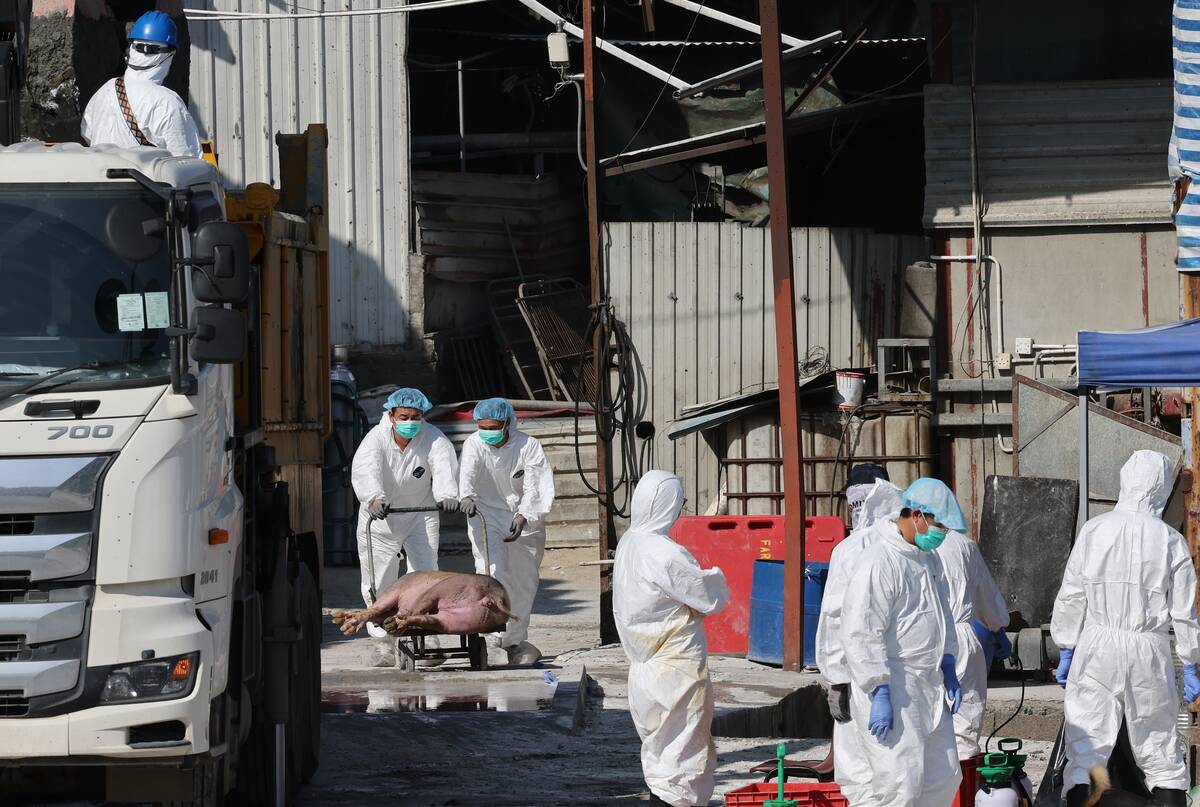STRATHMORE – The move to soil conservation farming is no longer a fad, but a serious commitment by many farmers who name soil erosion as public enemy number one.
After seeing the newest in a dozen direct seeders, straw and chaff spreaders, several of the 600 people attending a demonstration day near Strathmore agreed farm implement manufactures are building the kind of equipment farmers need to save their soil.
Some placed fertilizer and seed together while others dropped fertilizer below or beside the seed. Soil disturbance was fairly low and after each machine made one pass, farmers got a chance to dig into the dirt to check depth and evenness of seed and fertilizer placement.
Read Also

Mixed results on new African swine fever vaccine
The new African swine fever vaccine still has issues, but also gave researchers insight into how virus strain impacts protection against the deadly pig disease.
Check list
When buying new implements Alberta Agriculture engineer Murray Green advised those present to look for several things. First, check how well the machine places seed and fertilizer. Second, find out if it’s easy to calibrate and finally, check if the machine is easy to use.
For Greg Andrews and Stuart Meston, who travelled from Three Hills to watch the machinery seed directly into last fall’s trash, the machines had their good and bad points.
The pair continuous crop on heavy, gumbo land that produces a high-yielding crop with ample amounts of straw. They’d like a direct-seeding demonstration on their land to see how the various seeders might perform compared to the light, sandy soil around Strathmore.
“They’ve got the seeding down but still don’t handle the trash well enough,” said Andrews. They noticed some of the equipment dragged the trash while a no-till seed drill from John Deere drove the straw into the ground with a herringbone effect.
These Three Hills farmers work their fields on an angle rather than rounds to limit the number of passes.
For Andrews and Meston, one of the major letdowns at the demonstration was not seeing active harrows or packers following the seeders. At the Strathmore show, ridges were left between the seeded rows which Meston said would be rough for his sprayer and combine to pass over later in the season.
About 25 millimetres of rain had fallen in the area a couple of days before the show. The seeders had no difficulty cutting through the soil or getting muddied. Andrews pointed out in the heavier soil zones this may not be so easy.
Begins before seeding
Later in the day, farmers were reminded soil conservation doesn’t start with the seeder. Murray Sankey of Coronation, president of the Alberta Conservation Tillage Society, was impressed with the straw and chaff spreaders attached to the combines.
“From the ACTS point of view, this (residue management) is the most important part of the operation,” said Sankey.
A Case International spread straw in a swath 18 metres wide for even distribution across the field. The demonstration was held on a calm, sunny day and dispersion of the trash was well controlled.















